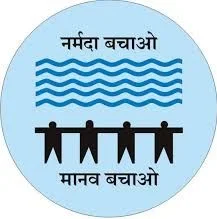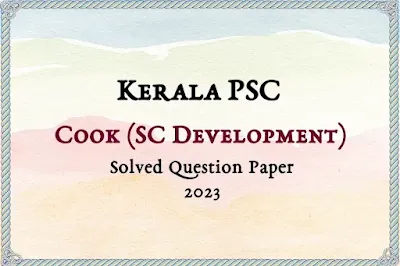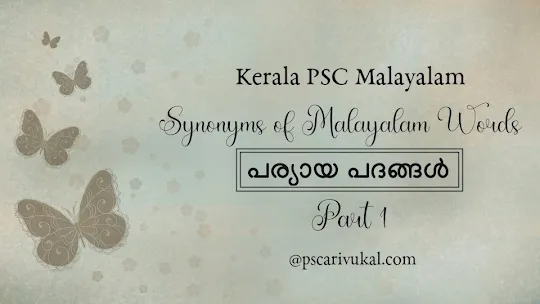1. Bishnoi Movement
- Year: 1700 AD.
- Place: Rajasthan.
- Founder: Sage Sombaji.
- Leaders: Amrita Devi Bishnoi along with Bishnoi villagers in Khejarli and surrounding villages.
- Aim: To save their sacred tree, "Khejri tree" from being cut down by the Jodhpur King’s soldiers for the construction of a new palace.
- Result: More than 300 villagers were killed along with Amrita Devi and her daughters. After this carnage, the King repented and apologized to the villagers and declared it as a protected area.
Bishnois were a Hindu religious group of non-violent people found in the Western Thar Desert and northern states of India. This religious sect was founded by Saint Guru Jambheshwar in 1485 AD in the Marwar (Jodhpur) desert region of western Rajasthan, India.
Bishnoi's faith forbids them from killing animals and the felling of trees. They were the Tree Huggers of the old. The Chipko Movement of 1973 was inspired by this incident.
2. Chipko Movement / Chipko Andolan
- Year: 1973.
- Place: Gopeshwar, Chamoli district & later at Tehri-Garhwal district of Uttarakhand.
- Epithet: Mother of all environmental movements in India (ഇന്ത്യയിലെ എല്ലാ പരിസ്ഥിതി പ്രസ്ഥാനങ്ങളുടെയും മാതാവ്).
- Founder of Chipko Movement: Chandi Prasad Bhatt.
- Leaders: Sundarlal Bahuguna, Chandi Prasad Bhatt, Gaura Devi & Sudesha Devi.
- Aim: To prevent illegal deforestation in the Himalayan slopes by the foreign-based logging companies (Simon Company).
- Slogan: Ecology is the permanent economy (coined by Sundarlal Bahuguna).
- Result: Became a stepping stone for further environmental protests of the country such as the "Save Himalaya" movement and Tehri Dam Conflict and massive reforestation efforts took place. The following are also considered as the result of the Chipko Movement.
- Forest Conservation Act (1980).
- Formation of Environment Ministry.
The word "Chipko" in Hindi means "to hug." The first non-violent protest under Chandi Prasad Bhatt, a Gandhian environmentalist occurred in the village of Mandal in the upper Alaknanda valley in April 1973.
This non-violent protest by Adivasi men and women can be considered as the best example of upholding the Gandhian principles of Ahimsa, Sarvodaya and Satyagraha.
The environmentalist Chandi Prasad Bhatt, founder of Dasholi Gram Swarajya Sangh (DGSS, 1964) was awarded Indira Gandhi Award for National Integration for the years 2017 and 2018.
3. Save Silent Valley Movement
- Year: 1978
- Place: Silent Valley, an evergreen tropical forest in the Palakkad district, Kerala
- Leaders: The Kerala Sastra Sahitya Parishad (KSSP, an NGO) & Sughathakumari (the poet-activist)
- Aim: To oppose KSEB (Kerala State Electricity Board) from setting up a hydroelectric project across Kunthipuzha in the Silent Valley.
- Result: In 1983, Prof. M.G.K. Menon Commission was set up for the environmental impact studies. Based on the report of the Commission, Govt. declared Silent Valley as National Park in 1985 (inaugurated by then PM Rajiv Gandhi)
4. Jungle Bachao Andolan
- Year: 1982
- Place: Singhbhum district, Bihar (nowadays Jharkhand)
- Leaders: The tribals of Singhbhum.
- Aim: Protest against Govt.'s "Greed Game Political Populism” (proposal to replace the natural Sal forest with commercial Teak plantations).
- Result: The Scheduled Tribes and Other Traditional Forest Dwellers (Recognition of Forest Rights) Act, 2006.
5. Appiko Movement / Appiko Chaluvali
- Year: 1983.
- Place: Uttara Kannada & Shimoga districts, Karnataka
- Leaders: Pandurang Hegde.
- Aim: Against the felling and commercialization of natural forest and the ruin of tribal livelihood.
6. Narmada Bachao Andolan
- Year: 1985
- Place: Narmada River, which flows through the states of Gujarat, Madhya Pradesh & Maharashtra.
- Leaders: Medha Patkar, Baba Amte, Arundhati Roy, along with the group of Adivasis, environmentalists, and human rights activists.
- Aim: Against a no. of large dams being built across the Narmada River.
- Result: Created an anti-big dam awareness around the country and the world.
7. Stop Tehri Dam Project

- Year: 1990s
- Place: Bhagirathi River near Tehri in Uttarakhand.
- Leaders: Sundarlal Bahuguna
- Aim: Against the displacement of town inhabitants and construction of the dam on a weak, seismic prone ecosystem.
📝SideNotes:
- Author of 'Standing up for trees: Women’s role in the Chipko Movement' – Shobha Jain .
- Which Forest Conservation movement was awarded Right Lively hood Award in the year 1987? Chipko movement. (Previous PSC Questions: Probation Officer Grade-II, 2019)
- Chipko movement was originated in ______ State of India – Uttarakhand. (Previous PSC Questions: Environment Scientist, 2017)
- Which of the following statements about the Chipko Movement is/are not correct ? (Previous PSC Questions: Common Preliminary Examination(Degree Level)- Stage I , 2021)
- i. Chipko movement was an Agrarian movement.
- ii. Chipko movement got inspired by ‘Sarvodaya movement’.
- iii. Gaura devi is an important leader of Chipko movement.
- Narmada debate is associated with – Sardar Sarovar Project. (Previous PSC Questions: Environment Scientist, 2017)
- The leader of Narmada Bachao Andolan is – Medha Patkar. (Previous PSC Questions: Confidential Assistant Grade-II & Stenographer, 2013)
- Silent Spring is a_____on_____ – book, pesticide toxicity. (Previous PSC Questions: Environment Scientist, 2017)














Post a Comment
Post a Comment